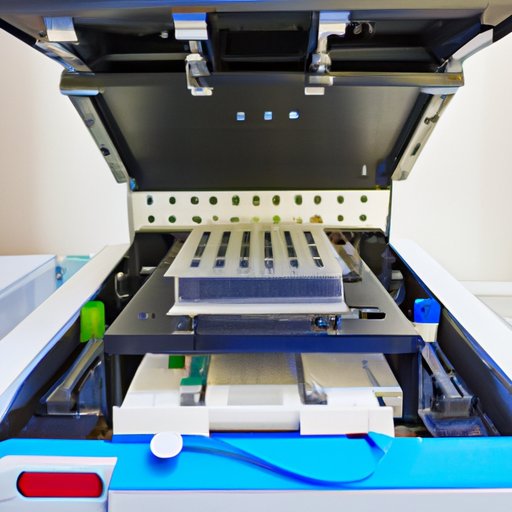Introduction
Automated cell counting techniques are a set of technologies used to quickly and accurately count cells in biological samples. These techniques have revolutionized the analysis of cell populations, providing researchers with more accurate and reliable data than traditional manual counting methods. Automated cell counting techniques can be used to measure the size, shape, and number of cells in a sample, as well as to detect cell abnormalities and track changes over time.

Types of Automated Cell Counting Systems
The most commonly used automated cell counting systems include flow cytometry, image analysis, spectrophotometry, and hemocytometers. Each of these techniques has its own advantages and disadvantages, and it is important to understand the differences between them in order to choose the best one for your research project.
Flow Cytometry
Flow cytometry is a powerful technique that uses lasers to detect and analyze individual cells in suspension. This technique allows researchers to measure cell size, shape, and fluorescence intensity, and to identify rare cell populations within a sample. Flow cytometry is often used to measure the number of viable cells in a sample, as well as to detect changes in cell populations over time.
Image Analysis
Image analysis is an automated cell counting technique that uses computer-aided imaging software to analyze images of cells. This technique is used to measure cell size, shape, and fluorescence intensity. Image analysis is often used to study cell morphology, as well as to detect rare cell populations within a sample.
Spectrophotometry
Spectrophotometry is an automated technique that uses light to measure the absorbance of a sample. This technique is used to measure the concentration of cells in a sample, as well as to detect changes in cell populations over time. Spectrophotometry is often used to measure cell viability, as well as to detect changes in cell populations due to drug treatments.
Hemocytometers
Hemocytometers are devices that use a grid pattern to manually count cells. The grid pattern is divided into small squares, and the number of cells in each square is counted. Hemocytometers are less expensive than other automated cell counting techniques, but they are not as accurate or as fast as other methods.

Comparison of Automated Cell Counting Techniques
When evaluating automated cell counting techniques, it is important to consider accuracy, cost, time, and ease of use. Flow cytometry is the most accurate technique, but it is also the most expensive and time-consuming. Image analysis is less accurate than flow cytometry, but it is faster and less expensive. Spectrophotometry is the least accurate technique, but it is also the least expensive and fastest. Hemocytometers are the least accurate and slowest technique, but they are also the least expensive.
Pros and Cons of Automated Cell Counting Methods
Automated cell counting techniques offer many advantages over manual counting methods, including greater accuracy, faster processing times, and lower costs. However, automated cell counting techniques also have some drawbacks, such as the need for specialized equipment and expertise, as well as the potential for errors due to operator error. Additionally, some automated cell counting techniques, such as flow cytometry, require expensive and complex equipment.

Guide to Choosing the Right Automated Cell Counting Technique for Your Needs
Choosing the right automated cell counting technique for your research project requires careful consideration. First, identify your needs by considering the type of cells you are studying, the desired accuracy and speed of the results, and the budget available for the project. Next, research the available technologies to determine which technique best meets your needs. Consider the cost of the equipment and associated supplies, as well as the time required to set up and run the experiment. Finally, consider your own experience level to ensure that you are using the correct technique for your project.
Conclusion
Automated cell counting techniques provide researchers with reliable and accurate data on cell populations. Different techniques offer different advantages and disadvantages, so it is important to carefully consider your needs before selecting the best technique for your project. By understanding the types of automated cell counting techniques, their pros and cons, and how to choose the right one for your needs, you can ensure that you are getting the most out of your experiments.
(Note: Is this article not meeting your expectations? Do you have knowledge or insights to share? Unlock new opportunities and expand your reach by joining our authors team. Click Registration to join us and share your expertise with our readers.)
